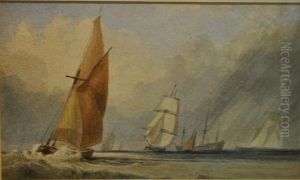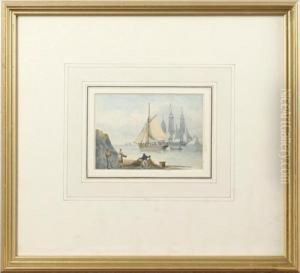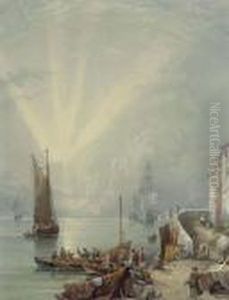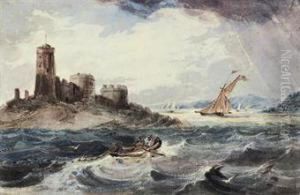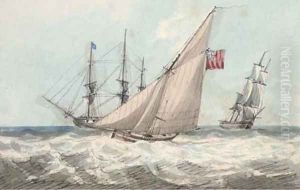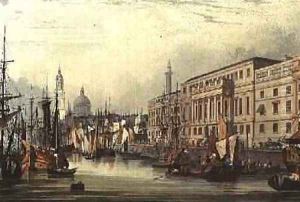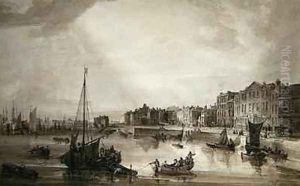Samuel Owen Paintings
Samuel Owen was an English marine artist born in 1769. He is best known for his detailed and precise paintings and watercolors of ships and maritime scenes. Owen's work is characterized by its meticulous attention to the technical aspects of vessels and the vibrant portrayal of the sea.
Owen's early life is not well-documented, but it is believed that he developed an interest in the sea and ships at a young age, which would later become the primary subject matter of his art. He was largely self-taught, honing his skills through observation and practice. Owen's dedication to his craft led to a high level of accuracy in his representations, which was greatly appreciated in a time when maritime prowess was a source of national pride in Britain.
Throughout his career, Samuel Owen exhibited at the Royal Academy and the British Institution. His works were sought after by collectors and those with maritime interests, including members of the British Admiralty. Owen's paintings and watercolors often featured regattas, shipwrecks, naval battles, and tranquil harbor scenes. He was particularly adept at capturing the nuances of light on water, a skill that added a lively realism to his work.
Despite the popularity of his maritime subjects, Owen did not limit himself solely to seascapes. He also produced a number of landscape paintings, although these are less well-known and not as frequently studied by art historians.
Samuel Owen's contribution to marine art continued to influence artists in the genre, and his works remain in collections both in the United Kingdom and internationally. He passed away in 1857, leaving behind a legacy as one of the important English marine artists of the 19th century.



